Comprehensive Report: Business Operations, Environment, and Strategies
VerifiedAdded on 2023/02/03
|12
|795
|20
Report
AI Summary
This report provides an analysis of business operations, focusing on private and public sector organizations, and different organizational structures. It examines the impact of the local, national, and global economic environment on businesses, using TESCO as a case study. The report also explores the impact of customer service on organizational success and highlights the benefits of customer profiling. Key topics include functional and divisional organizational structures, the effects of economic factors like taxes and inflation, and the importance of customer satisfaction. The report also discusses how customer profiling can enhance marketing activities, reduce competition, and increase profits. The document includes references to relevant academic sources.
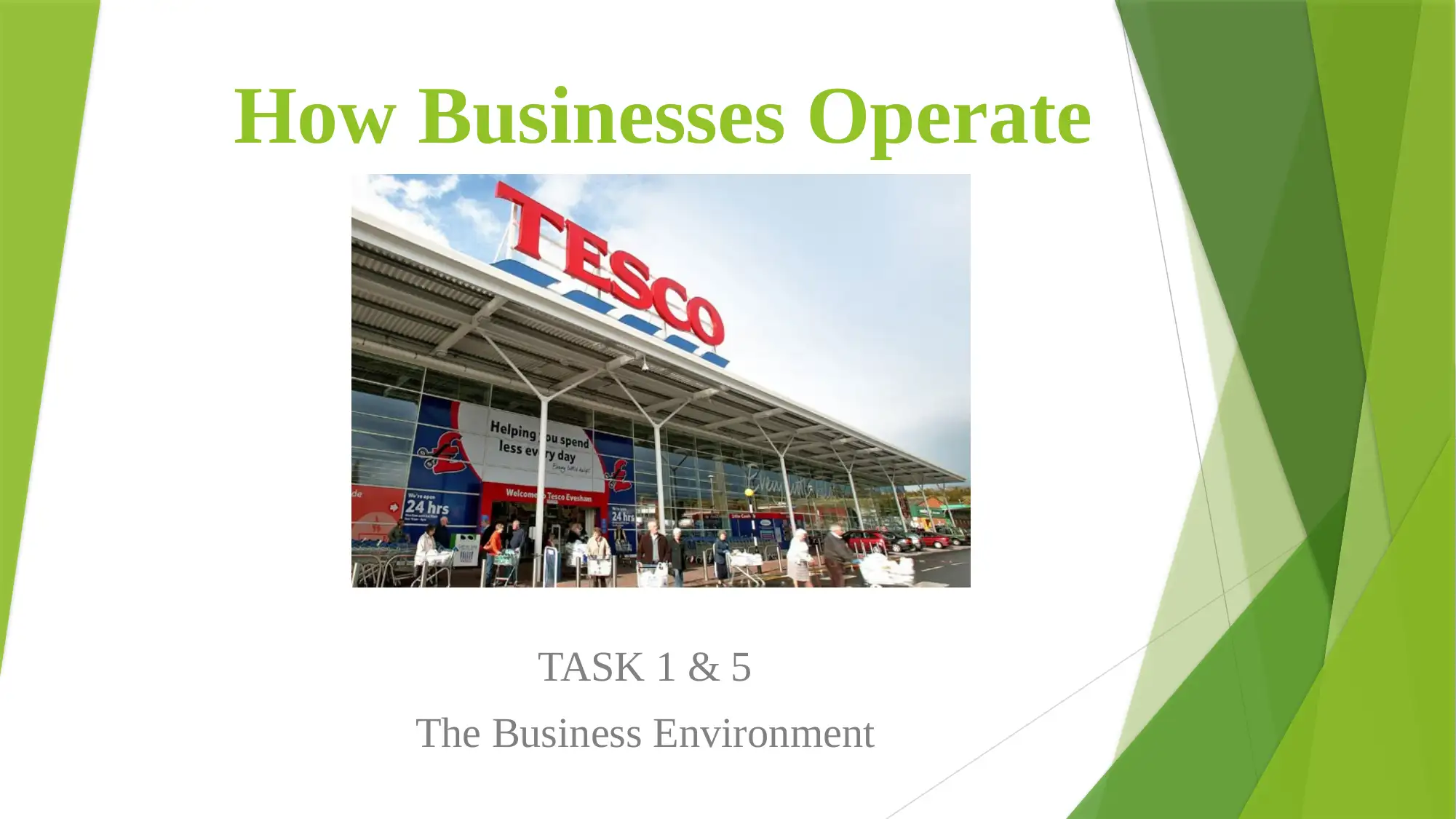
How Businesses Operate
TASK 1 & 5
The Business Environment
TASK 1 & 5
The Business Environment
Paraphrase This Document
Need a fresh take? Get an instant paraphrase of this document with our AI Paraphraser
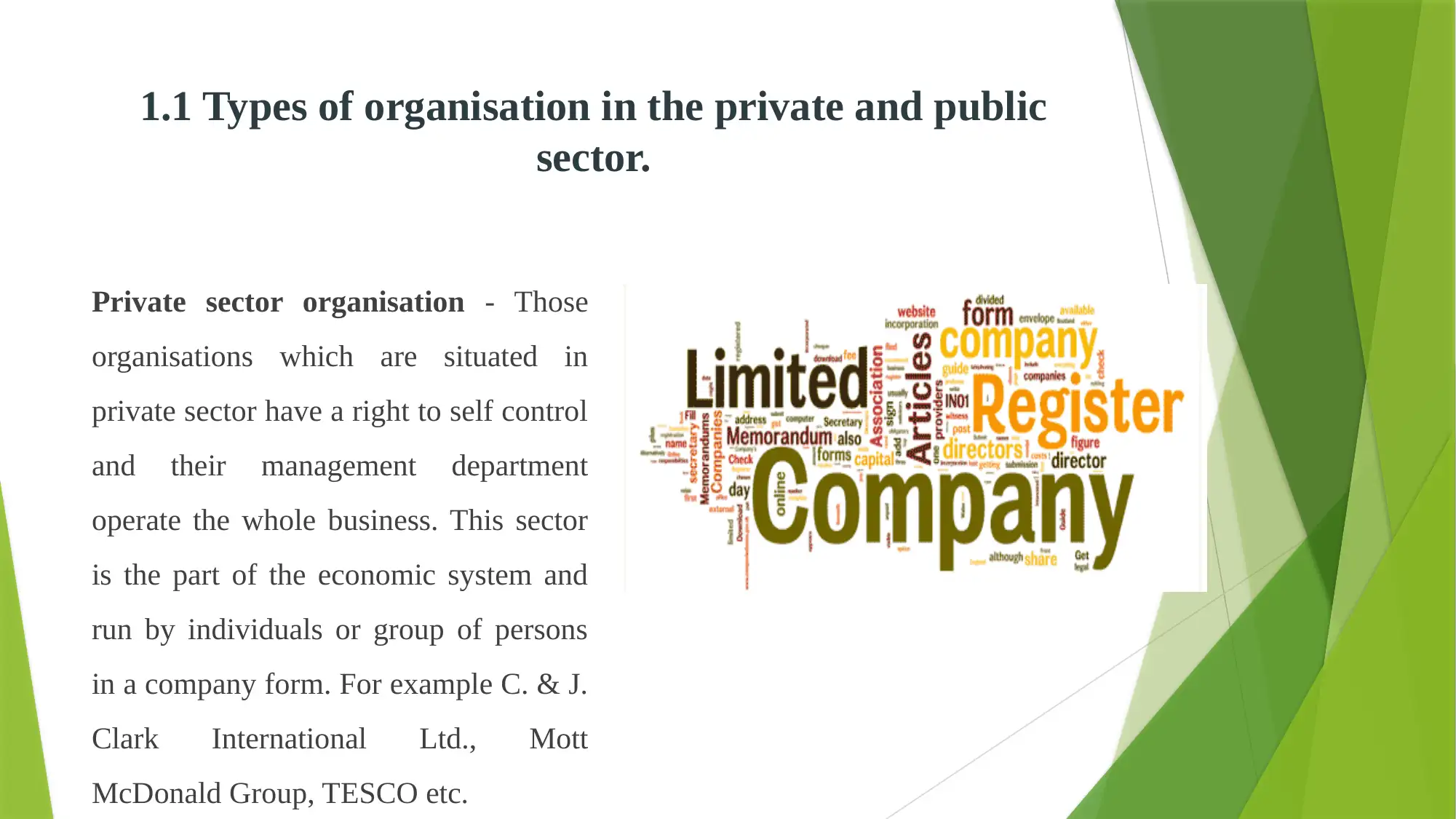
1.1 Types of organisation in the private and public
sector.
Private sector organisation - Those
organisations which are situated in
private sector have a right to self control
and their management department
operate the whole business. This sector
is the part of the economic system and
run by individuals or group of persons
in a company form. For example C. & J.
Clark International Ltd., Mott
McDonald Group, TESCO etc.
sector.
Private sector organisation - Those
organisations which are situated in
private sector have a right to self control
and their management department
operate the whole business. This sector
is the part of the economic system and
run by individuals or group of persons
in a company form. For example C. & J.
Clark International Ltd., Mott
McDonald Group, TESCO etc.
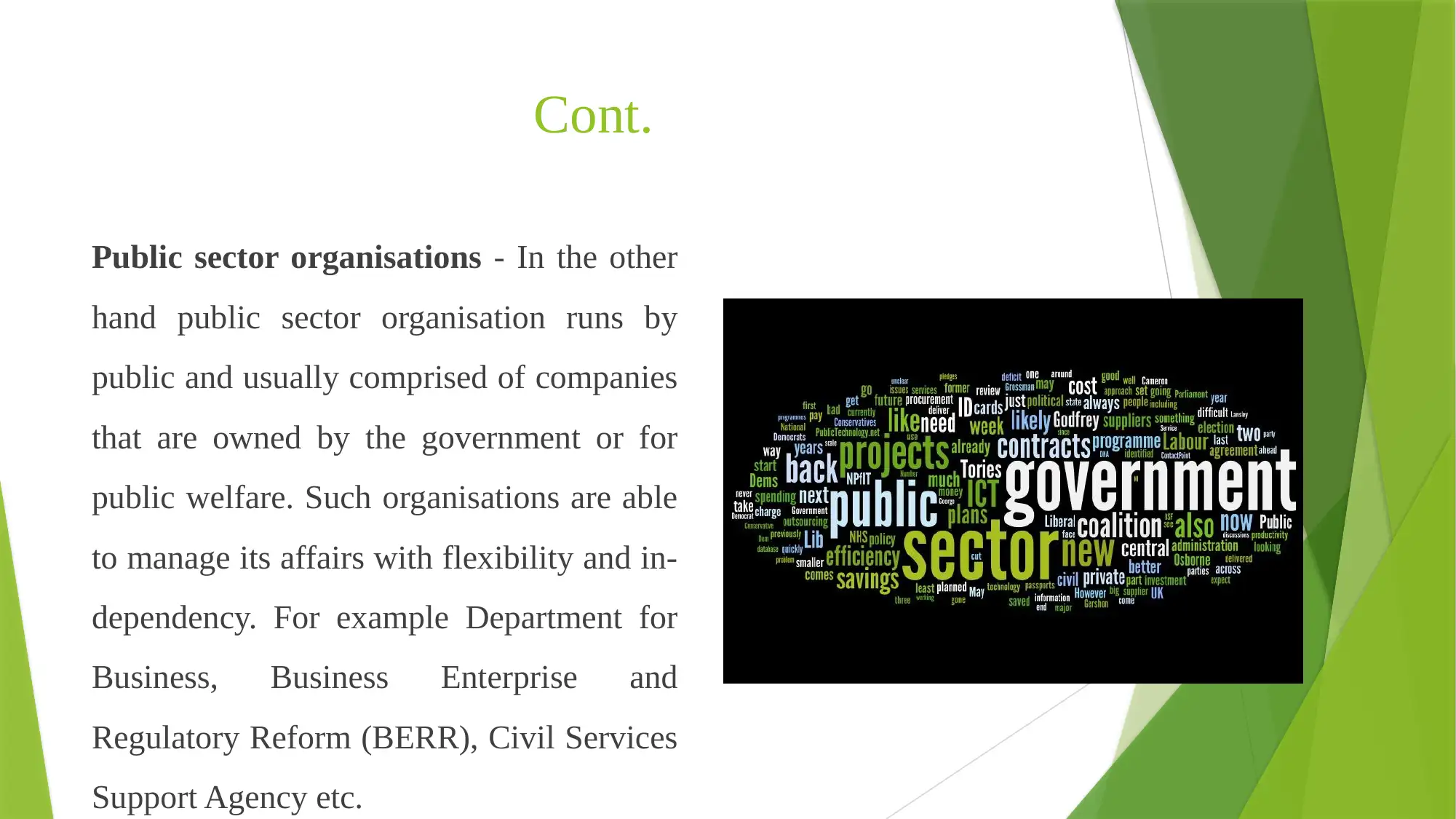
Cont.
Public sector organisations - In the other
hand public sector organisation runs by
public and usually comprised of companies
that are owned by the government or for
public welfare. Such organisations are able
to manage its affairs with flexibility and in-
dependency. For example Department for
Business, Business Enterprise and
Regulatory Reform (BERR), Civil Services
Support Agency etc.
Public sector organisations - In the other
hand public sector organisation runs by
public and usually comprised of companies
that are owned by the government or for
public welfare. Such organisations are able
to manage its affairs with flexibility and in-
dependency. For example Department for
Business, Business Enterprise and
Regulatory Reform (BERR), Civil Services
Support Agency etc.
⊘ This is a preview!⊘
Do you want full access?
Subscribe today to unlock all pages.

Trusted by 1+ million students worldwide
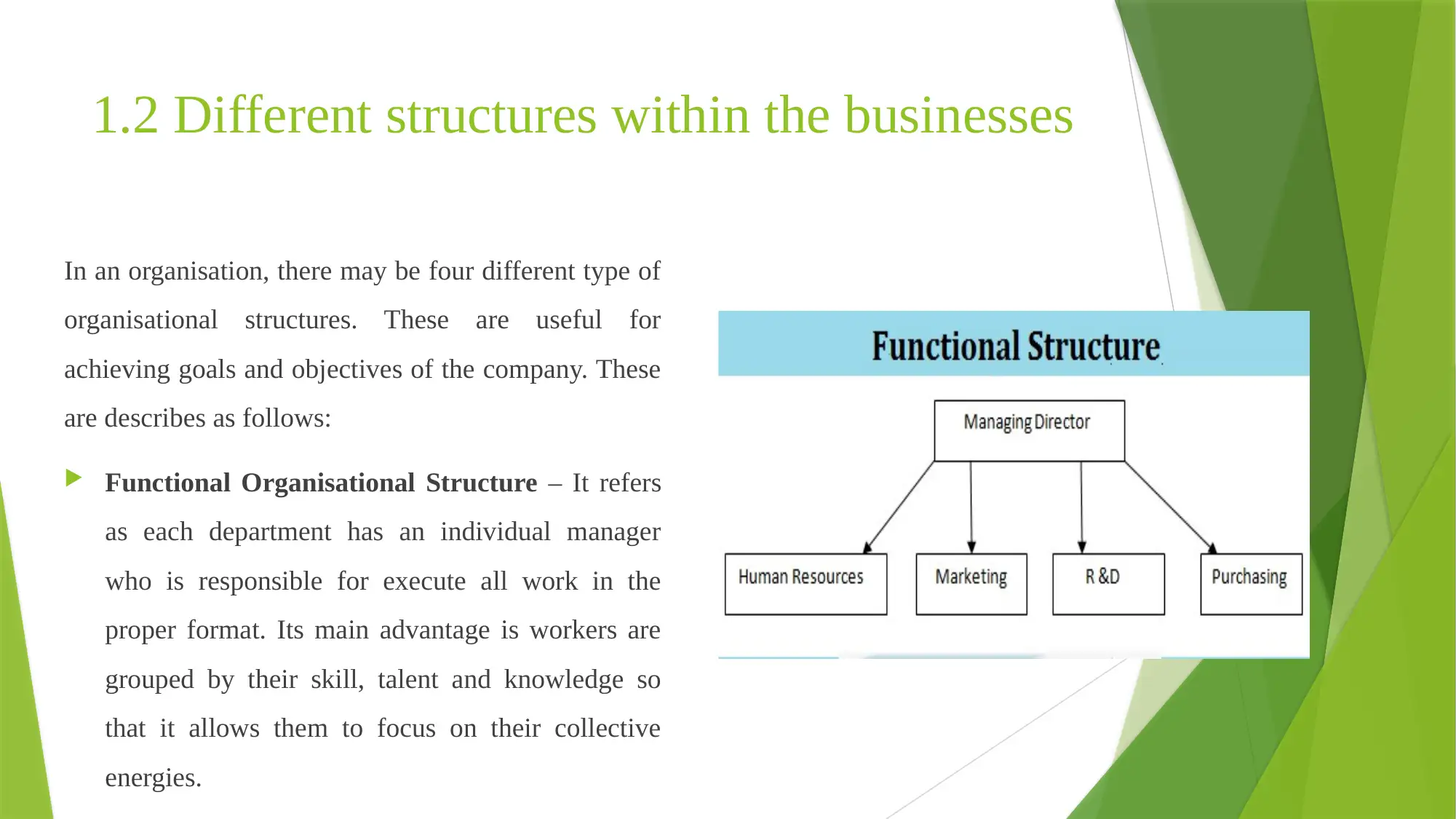
1.2 Different structures within the businesses
In an organisation, there may be four different type of
organisational structures. These are useful for
achieving goals and objectives of the company. These
are describes as follows:
Functional Organisational Structure – It refers
as each department has an individual manager
who is responsible for execute all work in the
proper format. Its main advantage is workers are
grouped by their skill, talent and knowledge so
that it allows them to focus on their collective
energies.
In an organisation, there may be four different type of
organisational structures. These are useful for
achieving goals and objectives of the company. These
are describes as follows:
Functional Organisational Structure – It refers
as each department has an individual manager
who is responsible for execute all work in the
proper format. Its main advantage is workers are
grouped by their skill, talent and knowledge so
that it allows them to focus on their collective
energies.
Paraphrase This Document
Need a fresh take? Get an instant paraphrase of this document with our AI Paraphraser
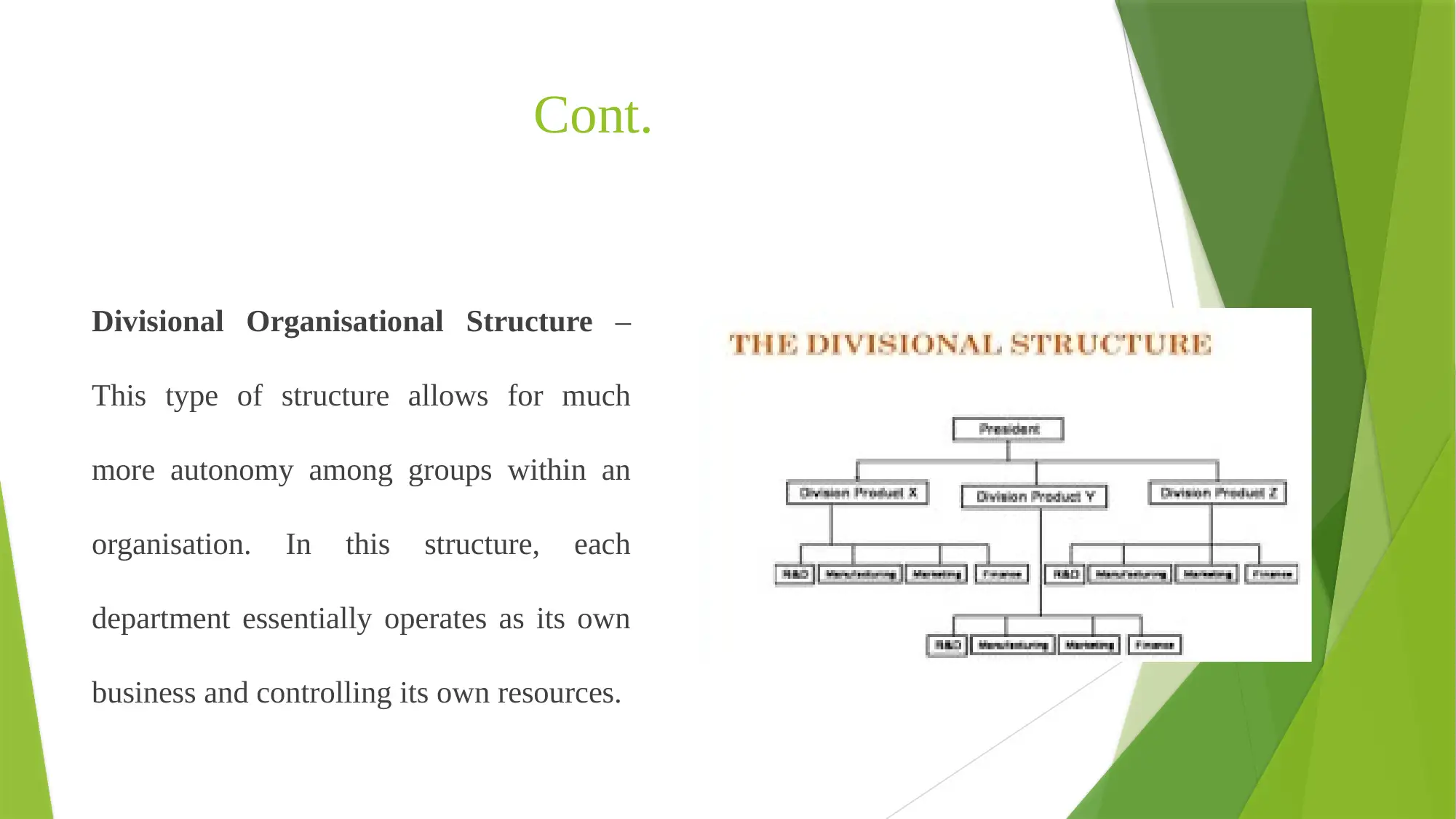
Cont.
Divisional Organisational Structure –
This type of structure allows for much
more autonomy among groups within an
organisation. In this structure, each
department essentially operates as its own
business and controlling its own resources.
Divisional Organisational Structure –
This type of structure allows for much
more autonomy among groups within an
organisation. In this structure, each
department essentially operates as its own
business and controlling its own resources.
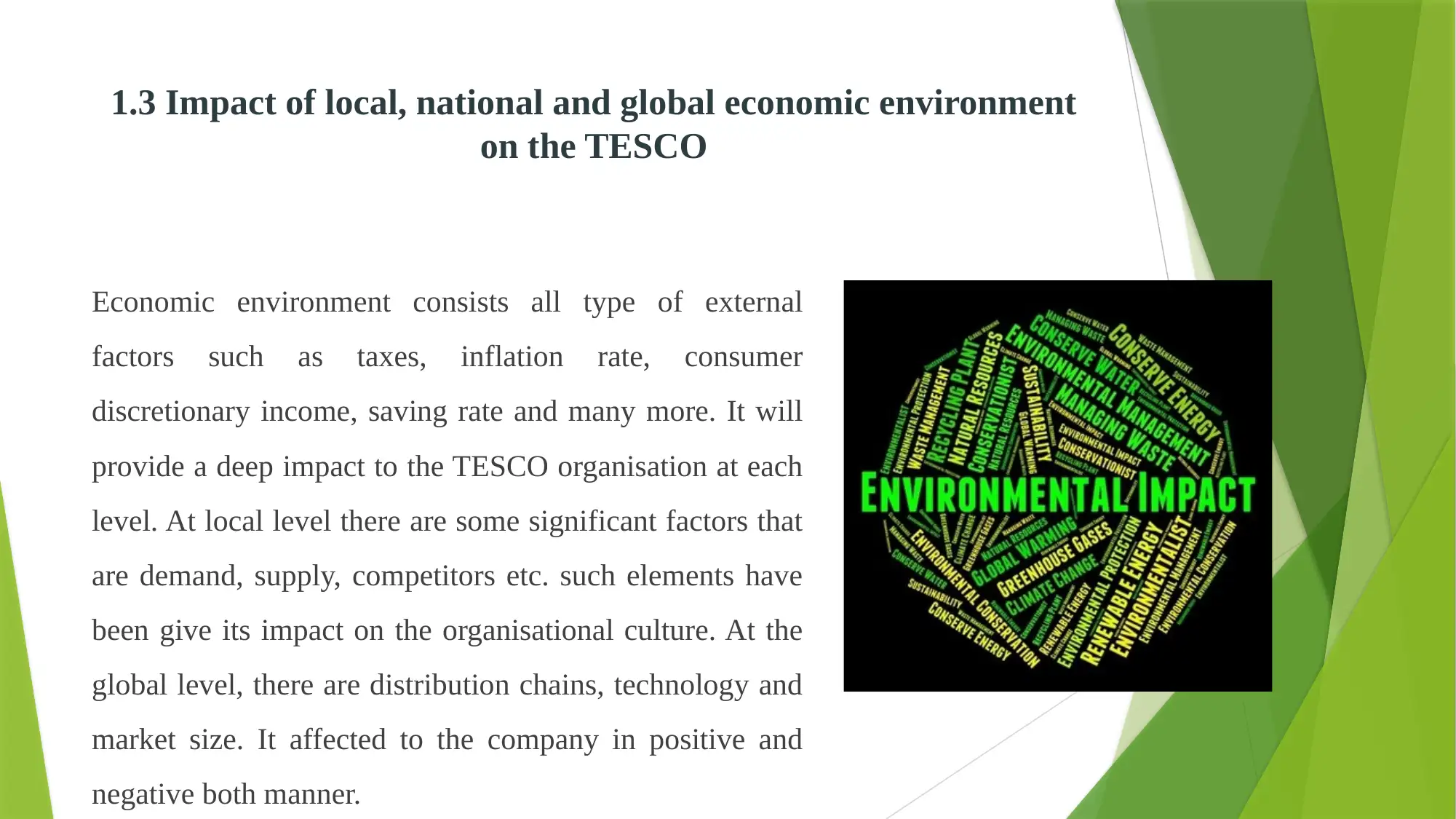
1.3 Impact of local, national and global economic environment
on the TESCO
Economic environment consists all type of external
factors such as taxes, inflation rate, consumer
discretionary income, saving rate and many more. It will
provide a deep impact to the TESCO organisation at each
level. At local level there are some significant factors that
are demand, supply, competitors etc. such elements have
been give its impact on the organisational culture. At the
global level, there are distribution chains, technology and
market size. It affected to the company in positive and
negative both manner.
on the TESCO
Economic environment consists all type of external
factors such as taxes, inflation rate, consumer
discretionary income, saving rate and many more. It will
provide a deep impact to the TESCO organisation at each
level. At local level there are some significant factors that
are demand, supply, competitors etc. such elements have
been give its impact on the organisational culture. At the
global level, there are distribution chains, technology and
market size. It affected to the company in positive and
negative both manner.
⊘ This is a preview!⊘
Do you want full access?
Subscribe today to unlock all pages.

Trusted by 1+ million students worldwide
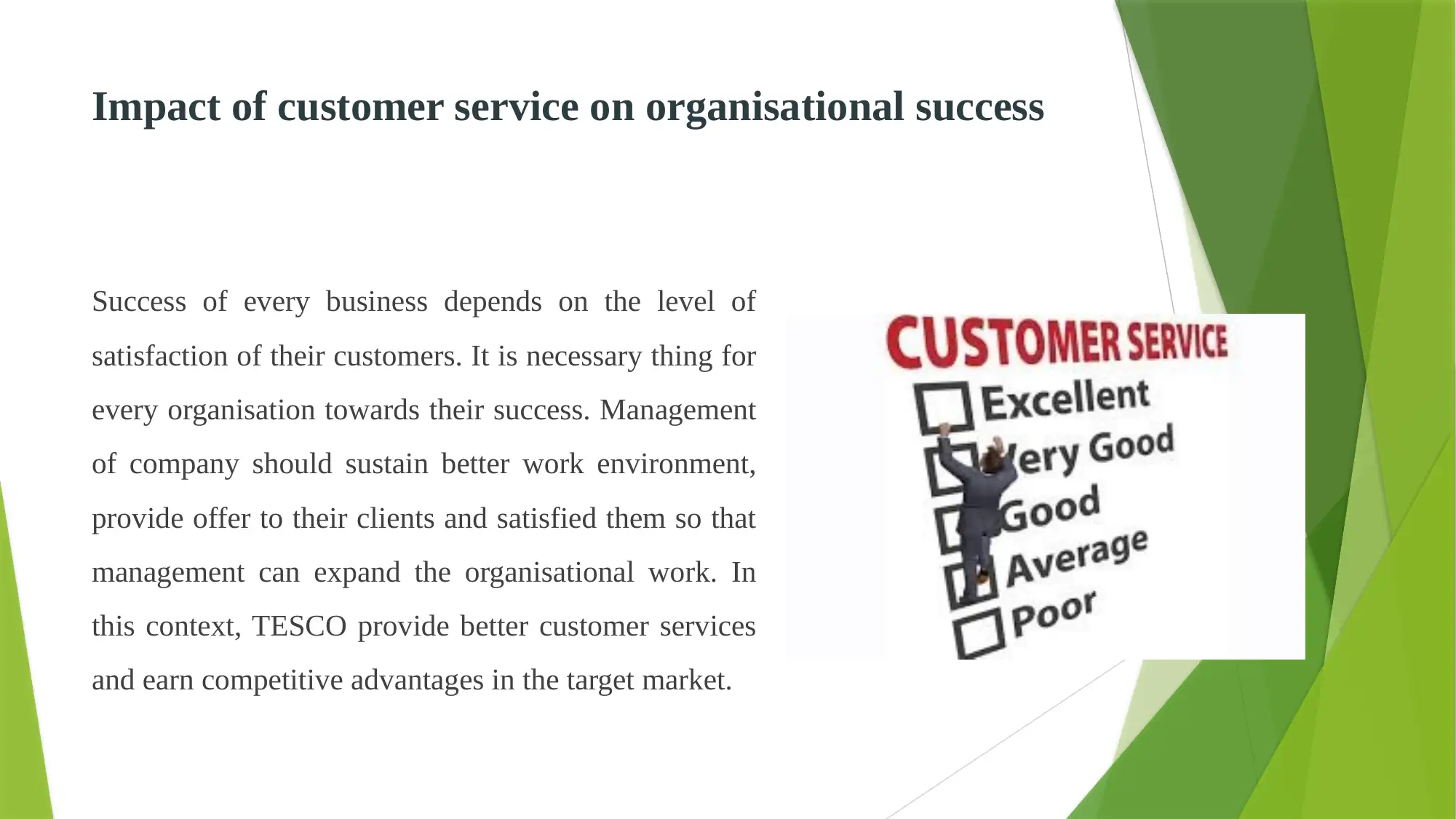
Impact of customer service on organisational success
Success of every business depends on the level of
satisfaction of their customers. It is necessary thing for
every organisation towards their success. Management
of company should sustain better work environment,
provide offer to their clients and satisfied them so that
management can expand the organisational work. In
this context, TESCO provide better customer services
and earn competitive advantages in the target market.
Success of every business depends on the level of
satisfaction of their customers. It is necessary thing for
every organisation towards their success. Management
of company should sustain better work environment,
provide offer to their clients and satisfied them so that
management can expand the organisational work. In
this context, TESCO provide better customer services
and earn competitive advantages in the target market.
Paraphrase This Document
Need a fresh take? Get an instant paraphrase of this document with our AI Paraphraser
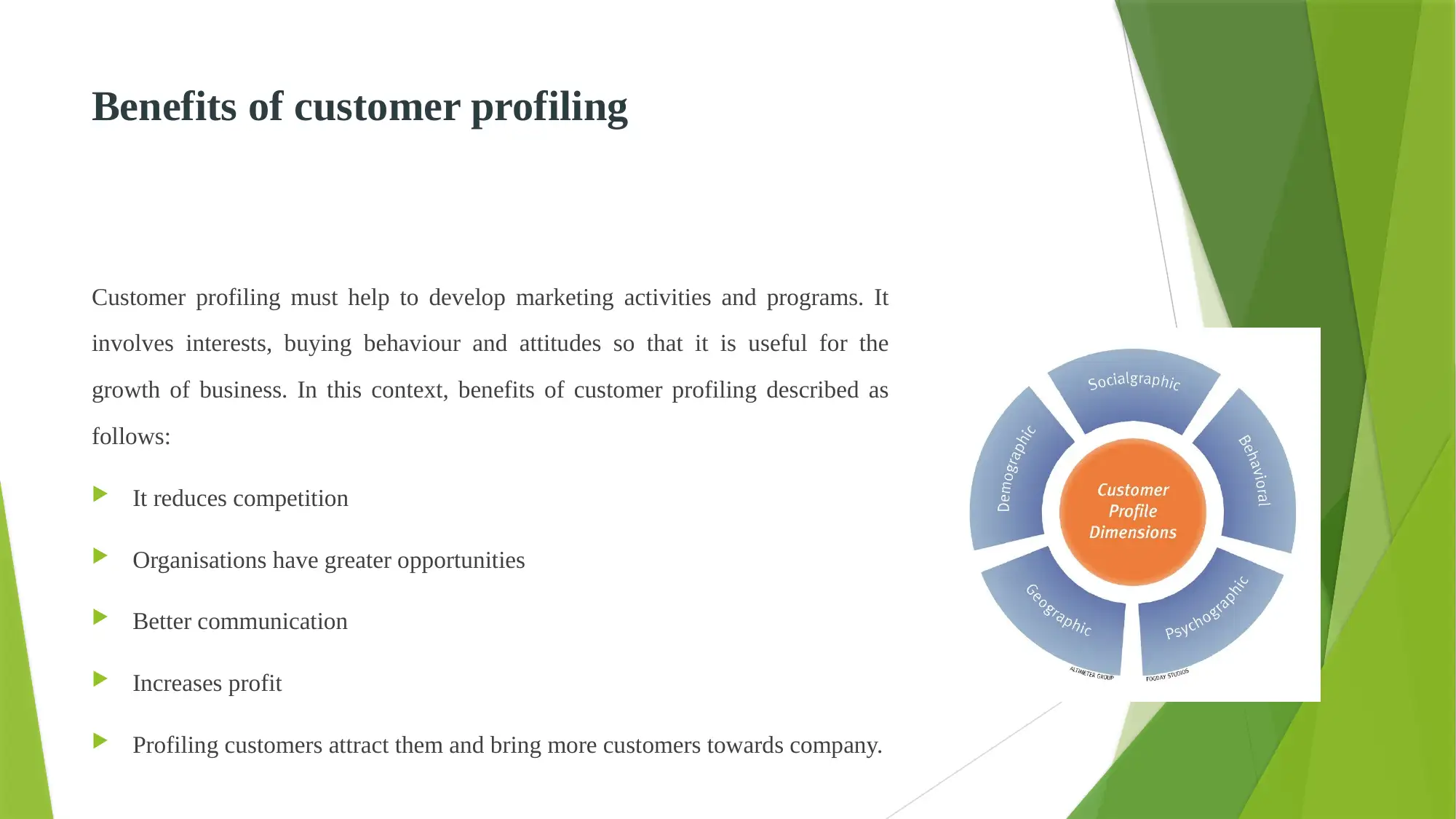
Benefits of customer profiling
Customer profiling must help to develop marketing activities and programs. It
involves interests, buying behaviour and attitudes so that it is useful for the
growth of business. In this context, benefits of customer profiling described as
follows:
It reduces competition
Organisations have greater opportunities
Better communication
Increases profit
Profiling customers attract them and bring more customers towards company.
Customer profiling must help to develop marketing activities and programs. It
involves interests, buying behaviour and attitudes so that it is useful for the
growth of business. In this context, benefits of customer profiling described as
follows:
It reduces competition
Organisations have greater opportunities
Better communication
Increases profit
Profiling customers attract them and bring more customers towards company.
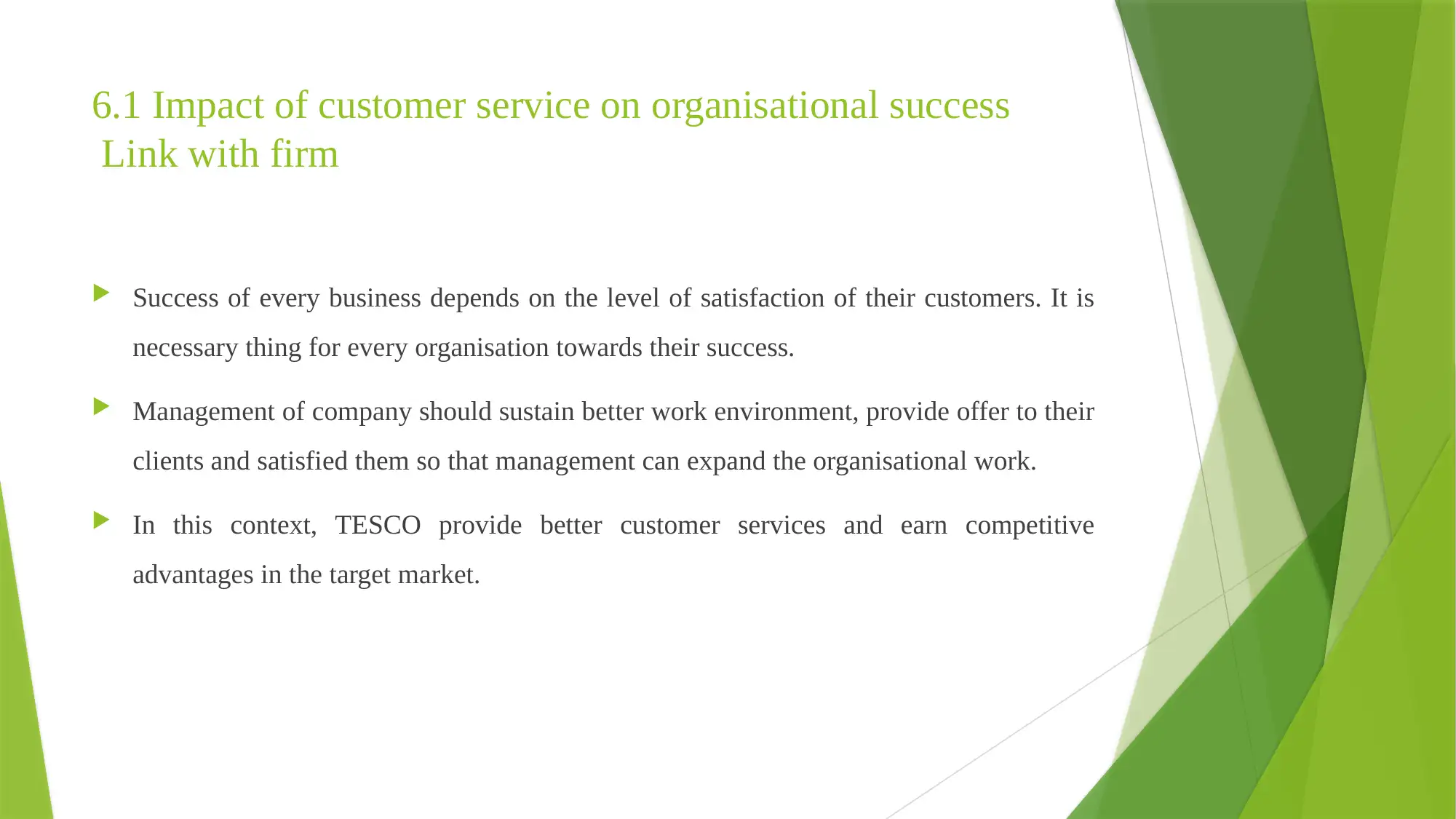
6.1 Impact of customer service on organisational success
Link with firm
Success of every business depends on the level of satisfaction of their customers. It is
necessary thing for every organisation towards their success.
Management of company should sustain better work environment, provide offer to their
clients and satisfied them so that management can expand the organisational work.
In this context, TESCO provide better customer services and earn competitive
advantages in the target market.
Link with firm
Success of every business depends on the level of satisfaction of their customers. It is
necessary thing for every organisation towards their success.
Management of company should sustain better work environment, provide offer to their
clients and satisfied them so that management can expand the organisational work.
In this context, TESCO provide better customer services and earn competitive
advantages in the target market.
⊘ This is a preview!⊘
Do you want full access?
Subscribe today to unlock all pages.

Trusted by 1+ million students worldwide
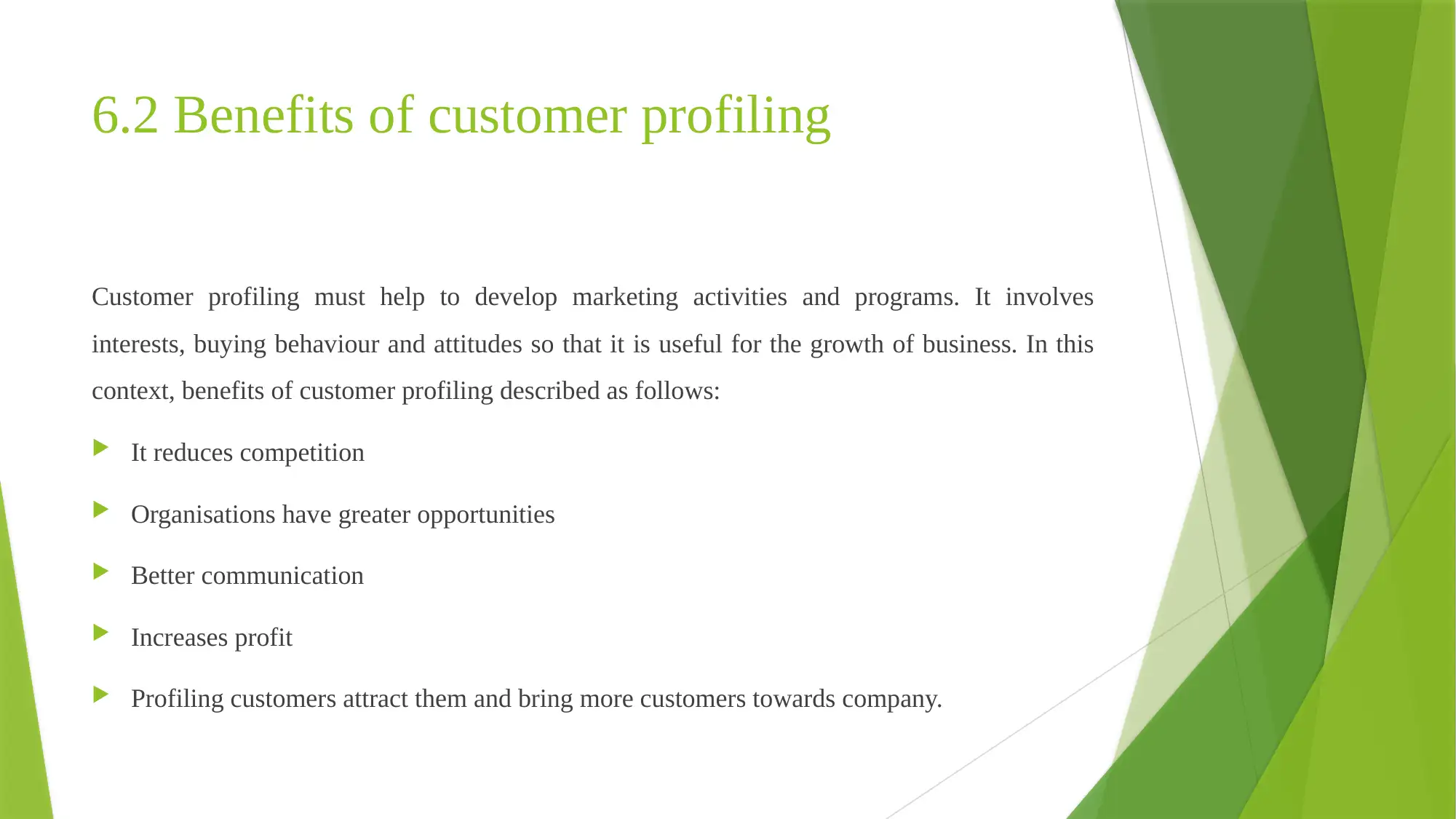
6.2 Benefits of customer profiling
Customer profiling must help to develop marketing activities and programs. It involves
interests, buying behaviour and attitudes so that it is useful for the growth of business. In this
context, benefits of customer profiling described as follows:
It reduces competition
Organisations have greater opportunities
Better communication
Increases profit
Profiling customers attract them and bring more customers towards company.
Customer profiling must help to develop marketing activities and programs. It involves
interests, buying behaviour and attitudes so that it is useful for the growth of business. In this
context, benefits of customer profiling described as follows:
It reduces competition
Organisations have greater opportunities
Better communication
Increases profit
Profiling customers attract them and bring more customers towards company.
Paraphrase This Document
Need a fresh take? Get an instant paraphrase of this document with our AI Paraphraser
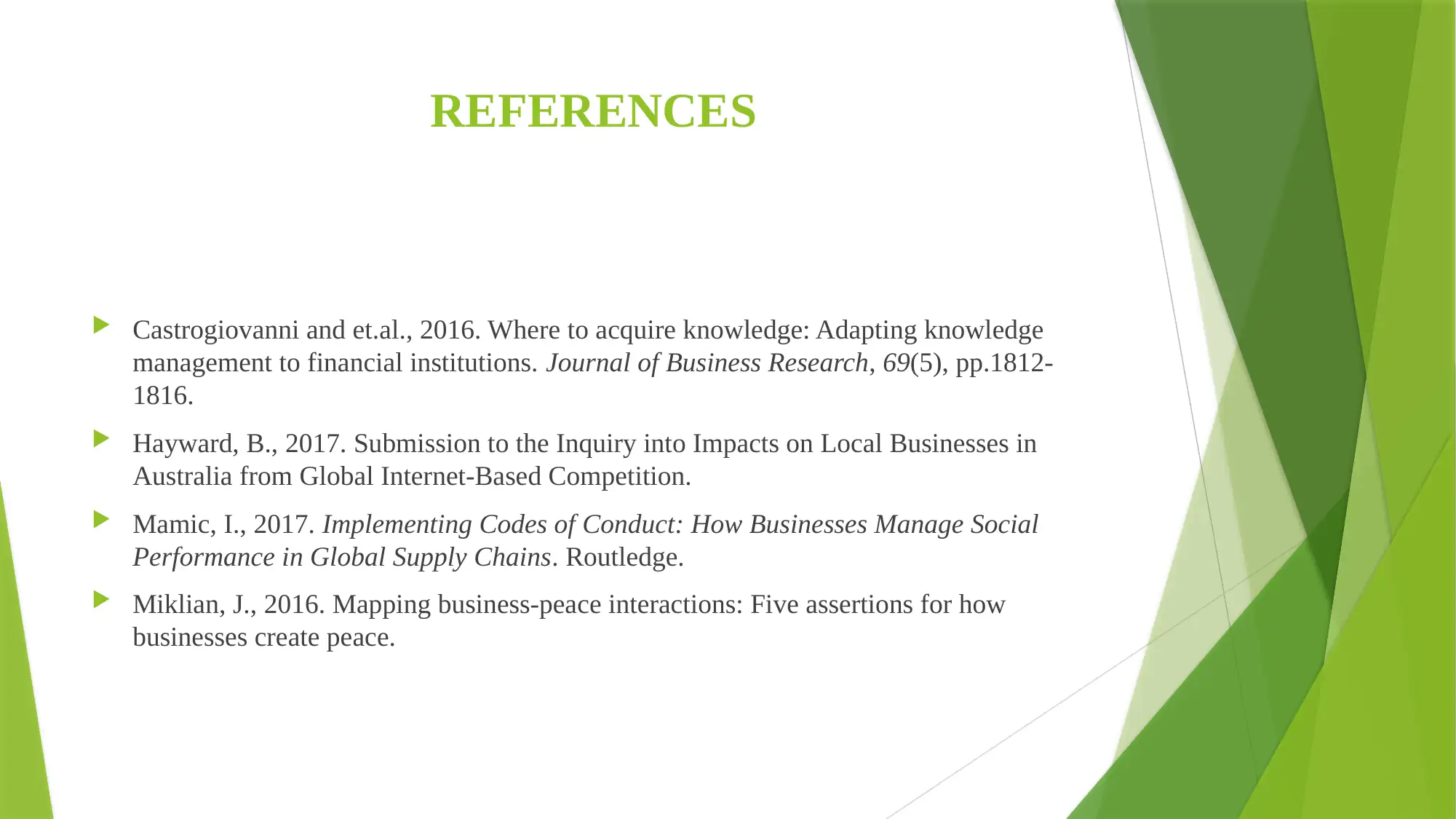
REFERENCES
Castrogiovanni and et.al., 2016. Where to acquire knowledge: Adapting knowledge
management to financial institutions. Journal of Business Research, 69(5), pp.1812-
1816.
Hayward, B., 2017. Submission to the Inquiry into Impacts on Local Businesses in
Australia from Global Internet-Based Competition.
Mamic, I., 2017. Implementing Codes of Conduct: How Businesses Manage Social
Performance in Global Supply Chains. Routledge.
Miklian, J., 2016. Mapping business-peace interactions: Five assertions for how
businesses create peace.
Castrogiovanni and et.al., 2016. Where to acquire knowledge: Adapting knowledge
management to financial institutions. Journal of Business Research, 69(5), pp.1812-
1816.
Hayward, B., 2017. Submission to the Inquiry into Impacts on Local Businesses in
Australia from Global Internet-Based Competition.
Mamic, I., 2017. Implementing Codes of Conduct: How Businesses Manage Social
Performance in Global Supply Chains. Routledge.
Miklian, J., 2016. Mapping business-peace interactions: Five assertions for how
businesses create peace.

THANK YOU
⊘ This is a preview!⊘
Do you want full access?
Subscribe today to unlock all pages.

Trusted by 1+ million students worldwide
1 out of 12
Related Documents
Your All-in-One AI-Powered Toolkit for Academic Success.
+13062052269
info@desklib.com
Available 24*7 on WhatsApp / Email
![[object Object]](/_next/static/media/star-bottom.7253800d.svg)
Unlock your academic potential
Copyright © 2020–2025 A2Z Services. All Rights Reserved. Developed and managed by ZUCOL.





